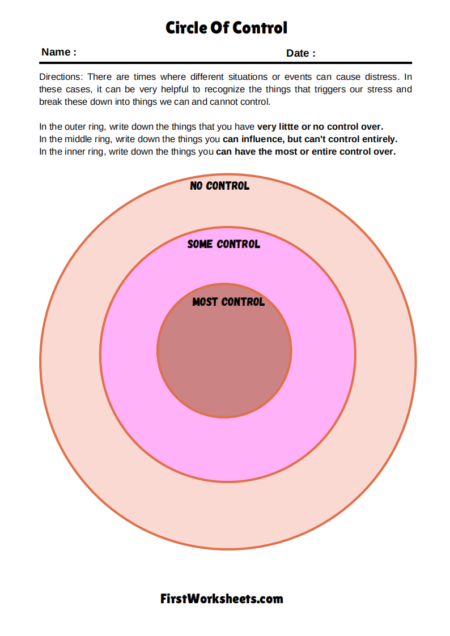Emotion Worksheets Worksheets
Social Emotional Learning (SEL) has gained increasing recognition as an essential component of education, focusing on the holistic development of students. While traditional education emphasizes academic achievement, SEL nurtures the emotional and social skills necessary for students to thrive in school and beyond. SEL worksheets are valuable tools in this educational approach, offering structured activities that help students build these critical skills. This article delves into the purpose, design, and application of SEL worksheets, exploring their role in fostering emotional intelligence, self-awareness, and positive social behavior.
What is Social Emotional Learning?
Social Emotional Learning (SEL) is an educational framework that integrates social and emotional skills into the curriculum. It aims to develop five core competencies in students:
- Self-awareness: Understanding one’s emotions, values, strengths, and limitations.
- Self-management: Effectively managing emotions, thoughts, and behaviors in different situations.
- Social awareness: Showing empathy and understanding for others from diverse backgrounds.
- Relationship skills: Building and maintaining healthy and rewarding relationships based on cooperation.
- Responsible decision-making: Making ethical, constructive choices about personal and social behavior.
These competencies are crucial for personal development, academic success, and future career readiness. SEL helps students navigate their emotions, establish positive relationships, and make responsible decisions, ultimately leading to a more supportive and effective learning environment.
The Purpose of SEL Worksheets
SEL worksheets are designed to support the development of the five core competencies by providing students with structured activities that promote reflection, discussion, and practice. These worksheets serve multiple purposes:
- Reflection: SEL worksheets encourage students to reflect on their feelings, thoughts, and behaviors. By writing or drawing about their emotions, students can better understand their own emotional responses and triggers.
- Skill Development: Worksheets often include scenarios or role-playing activities that help students practice managing their emotions, resolving conflicts, and making decisions in a controlled environment.
- Discussion Prompts: Many SEL worksheets include prompts for group discussion, fostering a sense of community and helping students learn from each other’s experiences.
- Assessment: Teachers can use SEL worksheets to assess students’ social and emotional development, identifying areas where they may need additional support.
Key Elements of Effective SEL Worksheets
To maximize the benefits of SEL worksheets, certain elements should be incorporated into their design:
- Age Appropriateness: Worksheets should be tailored to the developmental stage of the students. Younger children may benefit from activities that involve drawing or simple, relatable scenarios, while older students may engage more with complex problem-solving exercises and in-depth reflections.
- Cultural Relevance: SEL worksheets should be culturally sensitive and inclusive, reflecting the diverse backgrounds of the students. This helps in promoting social awareness and empathy.
- Interactive Components: Including interactive elements like role-playing, group activities, or creative tasks can enhance engagement and make the learning experience more dynamic.
- Clear Instructions: Worksheets should have clear, concise instructions to ensure that students understand the objectives and the steps needed to complete the activities.
- Flexibility: Effective SEL worksheets allow for flexibility in responses, recognizing that students may have different ways of expressing their emotions and thoughts.
- Integration with Curriculum: For SEL to be effective, it should not be isolated from the academic curriculum. Worksheets should be designed to complement other subjects, integrating SEL into the broader educational experience.
Examples of SEL Worksheet Activities
- Emotion Identification: Students are given a list of emotions with corresponding faces or scenarios and are asked to identify how they feel in different situations. This helps build self-awareness and emotional vocabulary.
- Mindfulness Coloring: Coloring sheets with prompts that encourage students to focus on their breathing or think about a peaceful place can help develop self-management skills.
- Conflict Resolution Scenarios: Students are presented with a conflict scenario and asked to write or discuss how they would handle the situation. This activity enhances relationship skills and responsible decision-making.
- Gratitude Journals: A worksheet that prompts students to list things they are grateful for can help cultivate a positive mindset and social awareness.
- Empathy Exercises: Activities where students imagine themselves in someone else’s shoes and describe how they would feel help in building empathy and social awareness.
Social Emotional Learning worksheets are invaluable tools in the modern educational landscape, fostering the development of essential life skills that go beyond academic achievement. By carefully designing and implementing these worksheets, educators can help students navigate the complexities of their emotions, build meaningful relationships, and make responsible decisions. As the focus on SEL continues to grow, these worksheets will remain a cornerstone in creating supportive and nurturing learning environments where every student can thrive emotionally and socially.
